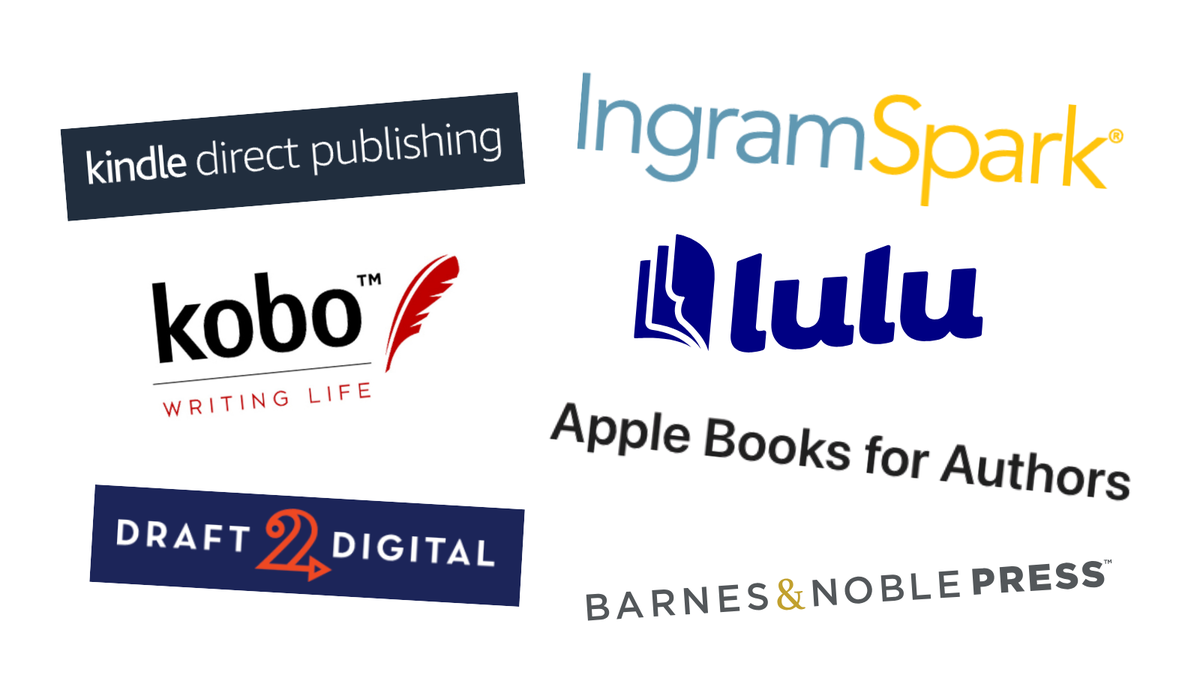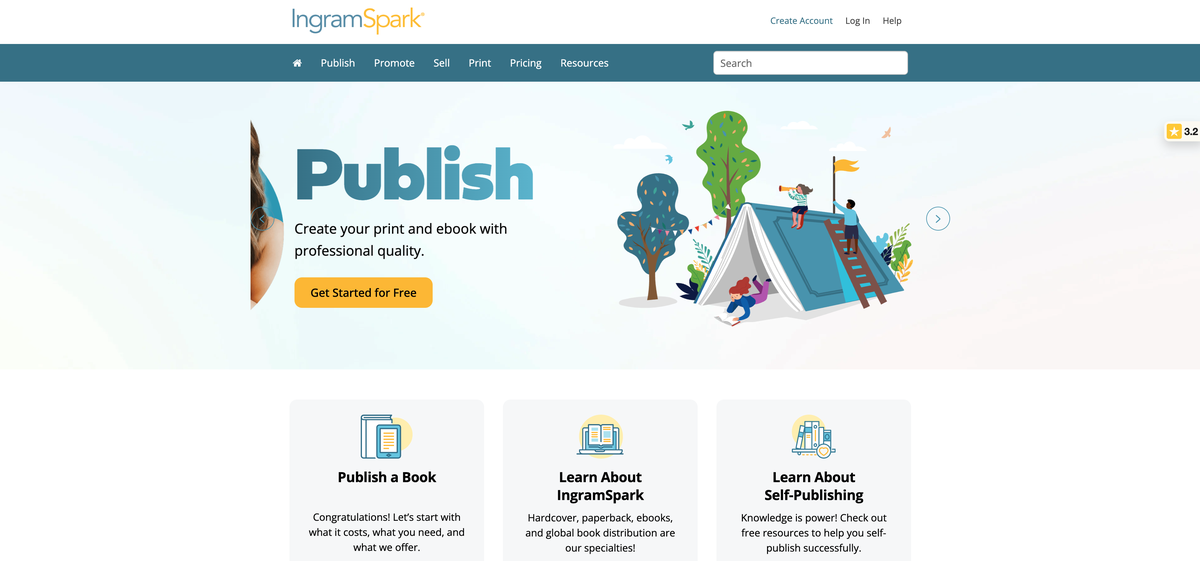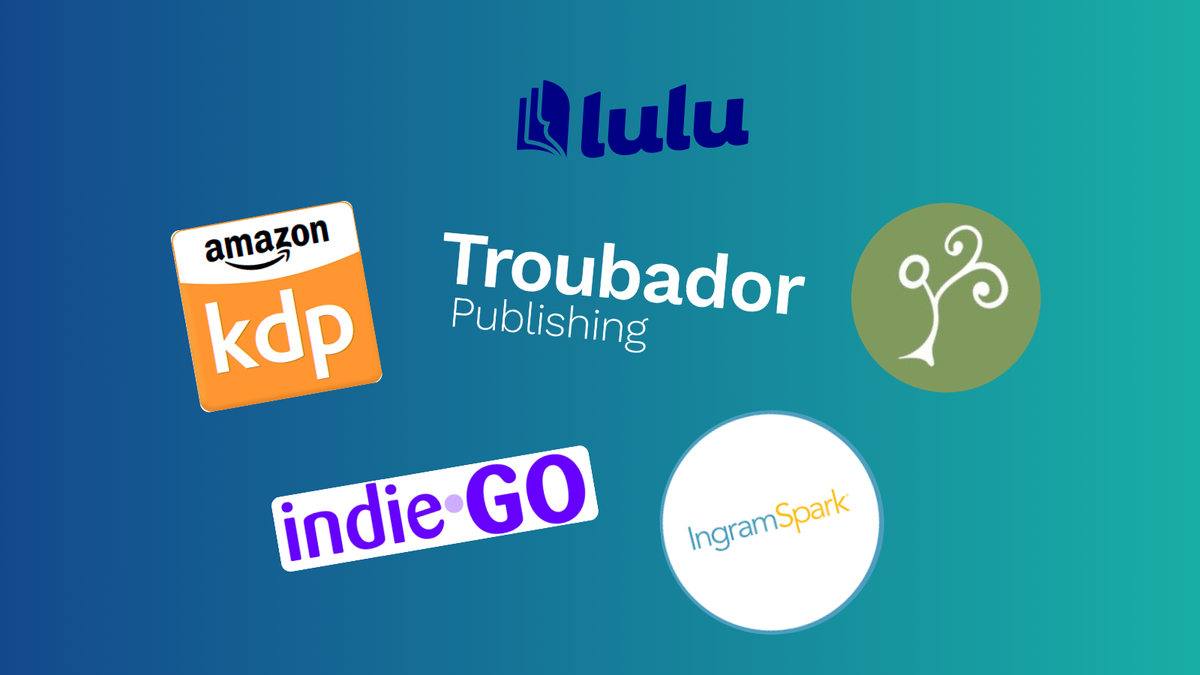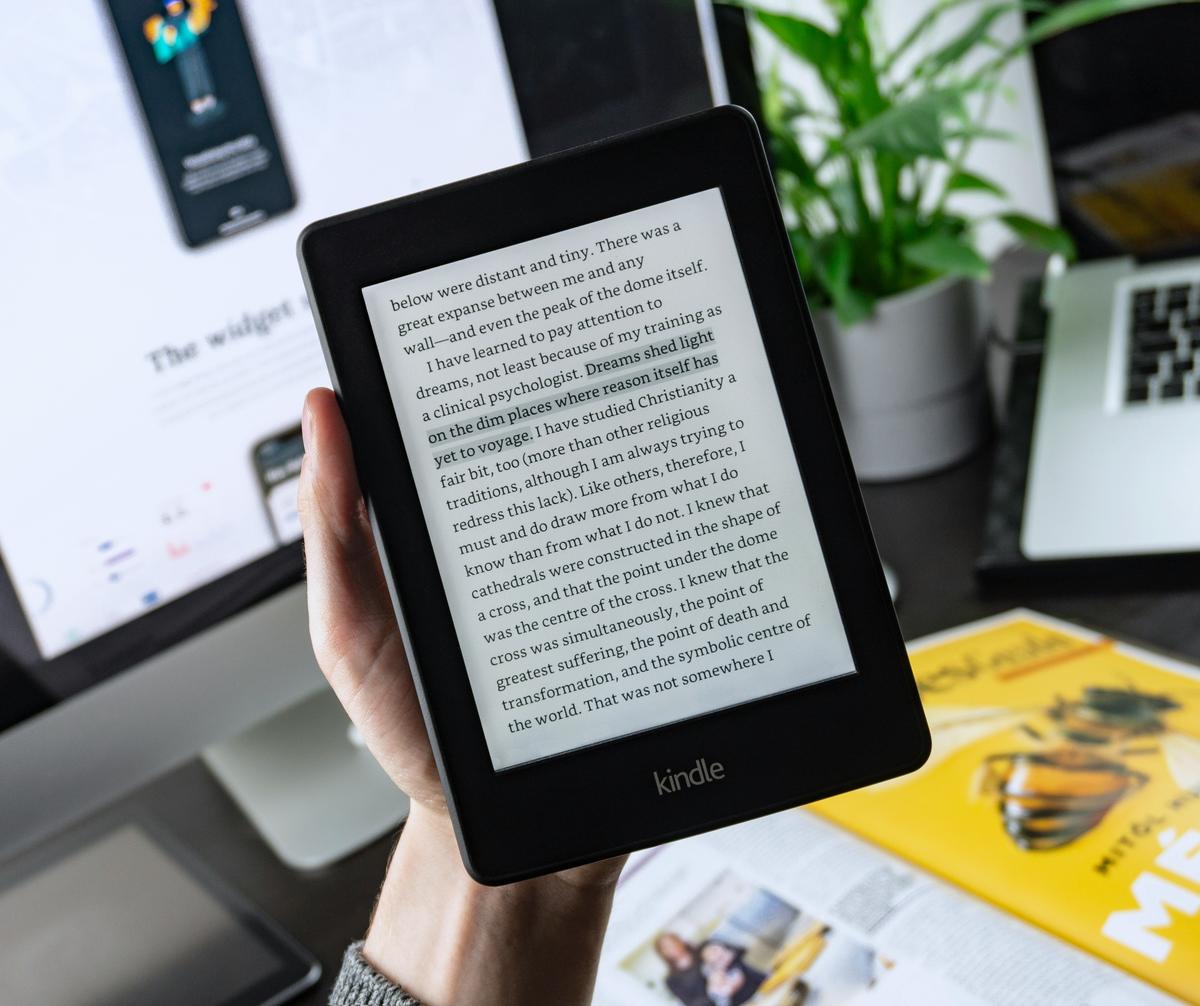
26th March, 2025
11 min read
The 7 Best Book Publishing Platforms for Self-Published Authors
Written by:
Alex Thompson
Self-publishing has transformed the book industry, allowing authors to bring their stories to readers without relying on traditional publishing houses, which can be hard to approach and are more picky than ever about what they publish. Whether you’re writing fiction, nonfiction, poetry or even academic works, self-publishing provides an accessible way to publish your book on your terms.
One key reason self-publishing has increased in popularity since the turn of the millennium is the introduction of various platforms that allow authors to self-serve when it comes to publishing their books. These platforms provide authors with the tools to format, publish, and distribute their books in digital and print formats. From Amazon Kindle Direct Publishing (KDP) to IngramSpark, numerous options are available, each with its strengths and limitations.
If an author decides to go down this route to self-publication, selecting the right platform is crucial because it directly impacts your book’s availability, sales potential and overall success. Some platforms offer broad distribution to major online retailers while others focus on specific markets or formats. Factors like royalty rates, exclusivity requirements, and marketing tools can influence your decision.
However, there are also many reasons authors should think carefully about whether self-publishing platforms are even the right approach for their self-publishing goals, as they all have limitations compared with other routes to market.
In this article, I’ll explain book publishing platforms, why authors use them, their limitations compared to other publishing methods and the best platforms available to authors today.
What is a book publishing platform?
Simply put, a book publishing platform is an online tool that allows authors to publish, distribute, and sell their books without going through a traditional publisher. These platforms can provide tools to format, upload and release books in digital and print formats, making self-publishing accessible to writers worldwide.
Publishing platforms handle distribution, ensuring books are available on major retailers like Amazon, Apple Books, and Barnes & Noble. They also manage sales processing, allowing authors to earn royalties from their work.
Key features often include formatting tools to prepare ebooks and print books, ISBN services and marketing options like promotional discounts or advertising opportunities. Each platform has its royalty structure, with some offering high percentages of book sales while others take a commission.
By using these platforms, authors can maintain full control over their work, set their prices, and reach a global audience without the barriers of traditional publishing.
Why would authors use a book publishing platform?
Self-publishing platforms have revolutionised the publishing industry, making it easier than ever for authors to bring their books to market. One of the most significant advantages of using a publishing platform is accessibility, as authors no longer need to go through literary agents or traditional publishers to reach readers. Instead, they can publish on their own terms, without facing rejections, lengthy review processes or elongated publishing timelines.
Another key benefit is distribution. Publishing platforms connect authors to major online retailers like Amazon, Apple Books, Barnes & Noble and Kobo, providing global visibility. Many also offer print-on-demand services, allowing authors to sell physical copies without managing inventory. This flexibility enables a multi-format approach, expanding market reach by offering both digital and print editions. Self-publishing through these platforms is also cost-effective, with many offering free or low up-front cost publishing options.
Perhaps the most significant advantage of self-publishing in general, no matter what route to publication an author chooses, is control. Authors (should!) retain full rights to their work, can set their own pricing, design their own covers and decide where and how their book is distributed. Book publishing platforms provide this level of independence with minimal barriers to entry, empowering writers to take charge of their publishing journey.
What are the limitations of a platform vs. Troubador?
Self-publishing platforms have made it easier than ever to get a book into the world, but they do come with significant limitations. To illustrate the key differences, I’ve outlined some ways in which book publishing platforms are limited compared to how we work with our authors at Troubador. These differences may or may not suit your publishing goals, but they’re important to consider when choosing the right path for your book.
Competition & visibility challenges
Millions of books are published annually through book publishing platforms like KDP, Draft2Digital, and IngramSpark. Since thousands of new titles flood the market daily, standing out is a major challenge, especially when using the same publishing and marketing tools as everyone else. Without professional guidance and a strategic approach, your book can easily get lost in the crowd.
Limited reach & retail distribution
Most publishing platforms distribute only to select retailers, with Amazon KDP being the most restrictive. While some platforms offer expanded distribution, access to high-street bookshops and libraries is often limited. Without having access to direct trade partnerships and established relationships with booksellers, as Troubador authors do, the chances of getting books stocked in physical bookshops are very low.
No bookshop stocking
Due to their limited shelf space, bookshops are highly selective about the titles they stock. Most avoid stocking any books published through KDP, for example, viewing it as a direct competitor to their own bookselling. Additionally, books that lack professional design, quality printing or a strong distribution network will struggle to secure shelf space. Troubador ensures that books meet trade standards, making them far more appealing to retailers and significantly increasing the likelihood of them being stocked.
Retailer exclusivity restrictions
Some platforms require exclusivity, restricting your ability to sell your book elsewhere. For example, KDP requires authors to distribute exclusively through Amazon for ebooks, meaning they can’t publish the same title on Apple Books, Kobo or other platforms. Troubador, on the other hand, offers flexible and wide distribution across a huge number of global stockists, giving books the maximum possible market reach.
Marketing & publicity limitations
While platforms provide some marketing tools, their effectiveness is often very limited. Most authors are left to figure out promotion independently, often struggling to gain traction. For authors that request our help, we execute publicity campaigns, market books to the trade and run paid advertising campaigns alongside other promotional support, helping books reach the right audiences. This significantly improves an author’s chances of success compared to self-publishing alone.
Poor quality printed copies
Print-on-demand (POD) services on platforms like KDP have limited printing capabilities. Rather than having access to the wide range of professional printers that publishers like Troubador do, POD book printing results in lower-quality books compared to the professional print runs that we commission. Issues such as thin paper, uneven trimming and lackluster cover finishes can make a book look unprofessional and unappealing to a reader. Instead, to ensure a quality end product, Troubador commissions high-quality printing, ensuring books meet industry standards and look just as polished as those from the larger traditional publishers.
Lack of personal support & guidance
One of the biggest downsides of publishing platforms is the lack of human interaction. Authors often attempt to navigate a complex publishing process alone, with only generic FAQs and automated support systems to rely on. For authors wanting to be guided through this complex process, we provide personalised guidance, meaning authors can speak directly with our team and receive expert advice every step of the way while still maintaining full control and final say over every element of their project.
Which option is right for you?
For authors, there is no right answer that suits every goal. However, if you want a fast, free, and fully independent publishing process, platforms like KDP can be a good fit. However, publishers like Troubador offer a far more comprehensive solution if you prefer a professional, guided approach with broader distribution, trade support and marketing expertise. Ultimately, the best choice depends on the level of control, support, and investment you seek as an author.
The Best Book Publishing Platforms for Self-Published Authors
Choosing the right book publishing platform is crucial for self-published authors. Each platform offers unique advantages including broad distribution, print-on-demand services or specialised market access. Below is an in-depth look at some of the best options available.
Amazon Kindle Direct Publishing (KDP)
Amazon KDP is the most popular self-publishing platform in the world. An arm of the Amazon retail behemoth, KDP gives authors direct access to the world’s largest online bookshop. Authors can publish both ebooks and print books without any upfront costs, resulting in a very low barrier to entry for authors. The platform also offers the KDP Select program, which gives authors access to Kindle Unlimited but requires ebook exclusivity on Amazon.
One of the key benefits of KDP is its massive audience, ensuring significant exposure. Additionally, authors earn competitive royalty rates, making it an attractive option for many. However, KDP does come with its limitations, including exclusivity restrictions, limited print distribution options and a lack of human support. While it’s great for digital sales on Amazon, getting books stocked in brick-and-mortar bookshops is near impossible with KDP.
Apple Books
Apple Books is an excellent platform for self-published authors, especially for those looking to target Apple device users. With the ability to distribute worldwide, Apple Books provides up to a 70% royalty rate on all ebook sales and does not require exclusivity, allowing authors to publish on multiple platforms simultaneously.
One of its strongest points is its direct access to Apple’s vast device ecosystem, which includes iPhones, iPads, and Mac computers. This means authors can reach a highly engaged and affluent audience. Despite its advantages, Apple Books’ market share is smaller compared to Amazon's, and it lacks a print-on-demand option, focusing exclusively on ebooks. Additionally, authors need an Apple device or third-party distributor to publish their books, which can be a hurdle for some.
Barnes & Noble Press
Barnes & Noble Press allows authors to distribute ebooks to Nook readers and sell print books via its online store. The platform’s print options include paperback and hardcover editions with competitive royalty rates, making it a strong contender for authors looking to reach the US market. Barnes & Noble Press also provides a unique benefit in that books published through the platform have a better chance of being stocked in physical Barnes & Noble stores compared to other self-publishing platforms.
However, its ebook market share is considerably smaller than Amazon or Apple Books, and it doesn't have a broad distribution reach compared to platforms like IngramSpark. Additionally, books sold via the platform are primarily available through Barnes & Noble, limiting access to some readers.
Kobo Writing Life
Kobo Writing Life is an excellent choice for authors looking to expand their reach internationally. Kobo has a particularly strong presence in Canada, Europe, and Asia, which gives authors access to markets they might otherwise miss out on by using Amazon alone. The platform offers authors competitive royalties on ebook sales and doesn’t require exclusivity, making it a flexible option for authors who want to distribute widely. Kobo also offers library distribution through its partnership with OverDrive, which expands access to libraries worldwide.
However, despite its global reach, Kobo still has a relatively small market share in the US compared to Amazon and it does not offer a print-on-demand service, making it less appealing for authors looking for physical book distribution.
IngramSpark
IngramSpark is widely considered one of the best platforms for print-on-demand (POD) distribution, especially for authors who want to get their books into bookstores and libraries. IngramSpark offers high-quality printing and global distribution, with options to sell through major retailers like Amazon, Barnes & Noble, and Book Depository. It is also better for authors looking to stock their books in physical bookshops - a feature not offered by many other platforms.
However, IngramSpark charges setup and revision fees, which can be a downside for some authors. Additionally, while the platform offers great distribution, the royalty rates can be lower and, even though they are able to distribute books to bookshops, the nature of the print-on-demand challenges mentioned above still stand meaning that authors will still find it hard to get those books stocked in physical bookshops.
Draft2Digital
Draft2Digital is a user-friendly ebook aggregator that simplifies the process of distributing books to multiple retailers, including Apple Books, Kobo, Barnes & Noble and libraries. Draft2Digital is known for its simple interface and automatic formatting tools, making it an excellent choice for first-time self-published authors who do not want to enlist professional help to create their books. The platform takes a small cut of royalties, but there are no upfront fees.
One of the platform’s major benefits is its ability to help authors distribute broadly, ensuring their ebooks reach a wide audience. However, Draft2Digital doesn’t support print publishing, meaning authors who want physical copies of their books must use another platform like KDP or IngramSpark. Additionally, it does not support direct distribution to Amazon.
Lulu
Lulu is a print-on-demand platform specialising in niche print formats, such as photo books, calendars, workbooks, and other special projects. While it does offer an ebook distribution network, its main strength lies in its customization options for print books, allowing authors to produce a variety of special formats not easily available on other platforms. Lulu offers an online store where authors can sell their books directly to readers, and it also has global distribution options through partnerships with retailers like Amazon and Barnes & Noble.
However, Lulu’s printing costs tend to be higher than platforms like KDP or IngramSpark, and its limited ebook distribution options mean that authors might have to rely on other platforms like Draft2Digital for broader ebook reach. Finally, as mentioned above, POD books are going to struggle to be stocked in bookshops.
Are book publishing platforms right for your project?
When deciding whether a self-publishing platform is the right choice for you, it’s important to carefully consider your individual needs as an author carefully. If you're looking for a quick, cost-effective way to publish and distribute your book across major online retailers, book-publishing platforms offer a strong starting point for your research. These platforms allow for broad reach with relatively little upfront investment, making them ideal for authors seeking independence and speed in the publishing process.
However, if you’re looking for a more personalised experience, a professional product and the opportunity to have your books stocked in bookshops, you may want to explore other options. Self-publishing service providers like Troubador Publishing offer the added benefit of professional guidance, print-on-demand services and access to brick-and-mortar retailers. While this route will require more upfront investment, it will provide the support and infrastructure needed to ensure that your book stands out in a competitive market.
In the end, choosing the right publishing approach depends on the level of control, support, and professional experience you're looking for. Platforms may be a great starting point for those aiming for broad digital distribution, but if you seek a more tailored publishing journey, a different approach with professional assistance could be the key to taking your book to the next level.















